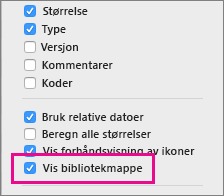Finder And Ofc For Mac

Updates January 26th 2018: Added shortcut method available on macOS Sierra keyboard. September 22nd 2016: Method of showing/hiding hidden files tested and working on macOS Sierra. December 22nd 2015: Method of showing/hiding hidden files tested and working on Mac OS X El Capitan.
It seems like every day I search Google for the command to show hidden files on Mac OS X, not to mention Googling for the command to then hide those hidden files a few minutes later. Today I decided to make a short and easy to remember alias to speed up the process. All I need do now is type showFiles and hideFiles whenever I need to show/hide OS X’s hidden files. Here’s how you can do it too.
Jul 28, 2016 - On the Office page page, under Install Office 2016 for Mac, select Install. Once the download has completed, open Finder, go to Downloads,. The Mac Finder is more than just a file browser, though. It's a road map to your Mac's file system. Taking a few minutes to learn more about how to use and customize the Finder is time well spent. Make the Most of the Finder Sidebar. Screen shot courtesy of Coyote Moon, Inc.
The Quickest Way to Show/Hide Hidden Files Since the release of macOS Sierra, when in Finder, it is now possible to use the shortcut: CMD + SHIFT +. Press once to show hidden files and again to hide them. If you’re using a version earlier than macOS Sierra, see to setup a toggle command via terminal. Thanks to for making me aware of this new shortcut. Show/Hide Hidden Files the Long Way The long way to show hidden Mac OS X files is as follows:. Open Terminal found in Finder Applications Utilities.
In Terminal, paste the following: defaults write com.apple.finder AppleShowAllFiles YES. Press return. Hold the ‘Option/alt’ key, then right click on the Finder icon in the dock and click Relaunch. Relaunch Finder by right clicking the Finder Icon whilst holding the ‘Option/alt’ key This will show all hidden files. To hide them again, follow the same steps but replace the Terminal command with: defaults write com.apple.finder AppleShowAllFiles NO It’s not the longest set of instructions or the biggest command to commit to memory but if you’re doing this a lot, it’s worth spending a few minutes now to save yourself a lot more time in the future.
Dream Chronicles - The Book Of Air 2.0 for Mac can be downloaded from our website for free. The most popular versions among the application users are 2.0 and 1.0. The application lies within Games, more precisely Adventure. Dream chronicles the book of air free download - The Chronicles of Shakespeare: A Midsummer Night's Dream, Dream Chronicles: The Book of Water Collector's Edition, Mactracker, and many more programs. Dream chronicles 4 free download. Dream Chronicles: The Book of Air Collector's Edition 1.0M - Solve puzzles in a strange dimension. Download the latest versions of the best Mac apps at safe and trusted MacUpdate Download, install, or update Dream Chronicles: The Book of Air Collector's Edition for Mac from MacUpdate. Dream Chronicles 2 2.0 - Unravel the secrets of your family 's past in this sequel. Download the latest versions of the best Mac apps at safe and trusted MacUpdate Download, install, or update Dream Chronicles 2 for Mac from MacUpdate.

Show/Hide Hidden Files using Terminal Aliases A Terminal alias is a name or shortcut for one or multiple commands. Using an easy to remember alias, we can turn the above four step process into just one. An alias can be made temporarily (just for the use of one terminal session) or permanently. Adding aliases to.bashprofile via Terminal Now when you want to show hidden files, all you need type in Terminal is showFiles, then hideFiles when you want to hide them.
If you want to modify the behaviour or alias names, let’s take a closer look at the commands you just added: alias showFiles='defaults write com.apple.finder AppleShowAllFiles YES; killall Finder /System/Library/CoreServices/Finder.app' alias tells Terminal we’re adding a new alias. ShowFiles is the name of the alias. Change this to what you wish. We then give the alias two commands. The first being: defaults write com.apple.finder AppleShowAllFiles YES; This is the command to show hidden files and is ended with a semi-colon; so we can then use the second command: killall Finder /System/Library/CoreServices/Finder.app This will relaunch the Finder (to replicate the step of holding the ‘Option/alt’ key then right clicking the Finder icon in the dock). Conclusion With the aliases set up, all you need do in the future is type showFiles and hideFiles to show and hide Mac OS X’s hidden files respectively. Aliases can be used to speed up your interaction with the Terminal.
Finder And Ofc For Mac 2017
Set up an alias for navigating to your most used directories, to commit to a GitHub repo and so on. Front-end Developer, author of, and graduate of Internet Technology. Ian combines his education with 10 years commercial experience in front-end development to produce high-quality websites and exceptional user experience. Front-end Developer. Available January 2019. Follow for web design & development articles, opinions and links.
Finder And Ofc For Mac Pro
View on GitHub for open-source projects such as, and. View my Learn about Ian's skills and workflow View Ian's web development work Read client recommendations Read web related articles, opinions & tutorials Simple & stylish UI to add to your front-end development toolbox Send a general message Enquire about hiring Ian Copyright © 2018.